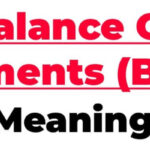Communication is a key to success in any business or organization. Having the right communication strategies in place can help you make sure your messages are heard and understood by the right people.
In this article, we’ll explore what communication strategy is, a different type of strategies, and why they’re necessary for success.
See Also: What are the Components of Communication
Table of Contents
ToggleWhat is the Communication Strategy?
An organization’s communication strategy is the overall approach that it takes to communicate with its target audiences.
The strategy includes the specific messages that the organization wants to communicate, the channels that will be used to deliver those messages, and the timing of the communications.
The communication strategy should align with the organization’s overall business goals and objectives.
It should also take into account the needs and preferences of the target audience. For example, if an organization is looking to increase brand awareness, its communication strategy might include a mix of traditional advertising, online marketing, and public relations activities.
An effective communication strategy will help an organization achieve its business goals and build strong relationships with its target audiences.
See Also: What is Communication Theory
Types of Communication Strategies
There are four main types of communication strategies:
-
Persuasive Communication
This type of communication is used to influence or change the attitude, belief, or behavior of the receiver. In marketing and advertising campaigns, it is frequently employed.
-
Informative Communication
This type of communication is used to provide information to the receiver. It is often used in educational settings.
-
Instructional Communication
This type of communication is used to provide instructions to the receiver. It is often used in work settings.
-
Interpersonal Communication
This type of communication occurs between two people and involves exchanging information, feelings, or thoughts.
There are several types of communication strategies that businesses can use to better communicate with their target audiences.
The first is known as the one-way communication strategy, which involves sending a message from the business to the audience with no feedback or interaction required from the latter.
This type of strategy is often used for announcements, new product launches, or other information that doesn’t require a response.
Another common type of communication strategy is two-way communication, which allows for back-and-forth interaction between the business and its audience.
See Also: What is Oral Communication | Importance | How to Improve It
This is often used for customer service interactions, social media engagement, or any other situation where it’s important to get feedback from the audience.
The third type of communication strategy is known as multi-channel communication, which involves using multiple channels to reach the target audience.
This could include a mix of traditional and digital channels, such as TV ads, print ads, social media posts, email marketing campaigns, and more.
By using multiple channels, businesses can reach a wider audience and increase the chances that their message will be seen and heard.
Finally, there’s also what’s known as 360-degree communication, which takes into account all touch points that a customer has with a brand.
This includes everything from advertising and marketing to customer service and product packaging.
By taking all of these factors into account, businesses can create a more holistic and well-rounded communications strategy that will resonate with customers on multiple levels.
Importance of Communication Strategies
Communication strategies are necessary to ensure that a company’s message is communicated effectively to its target audience.
See Also: Importance of Oral Communication
Without a communication strategy, a company runs the risk of its message getting lost in the noise of the marketplace.
A communication strategy should take into account the following:
- Who is the target audience?
- What are the objectives of the communication?
- What channels will be used to communicate with the target audience?
- What is the most important message that has to be spread?
- How can we measure the effectiveness of the communication strategy?
Communication strategies are important because they can help businesses achieve their communication objectives.
By having a clear and effective communication strategy, businesses can ensure that their message is communicated clearly and effectively to their target audience.
Additionally, communication strategies can help businesses save time and money by ensuring that the right communication channels are used to reach the target audience.
How Communication Strategies Works
Communication strategies are important because they provide a plan for how you will communicate with your target audience.
By having a communication strategy in place, you can ensure that your message is clear and consistent across all channels.
There are many different types of communication strategies, but some of the most common include public relations, advertising, and direct marketing.
Each type of communication has its strengths and weaknesses, so it’s important to select the right strategy for your needs.
See Also: Basic Concepts of Communication and Their Problems
Public relations are a great way to build relationships with your target audience.
Through PR, you can share your story and connect with people who might be interested in what you have to say. PR, though, can be costly and time-consuming.
Advertising is another popular communication strategy. It allows you to reach a large number of people with your message through paid media placements.
However, advertising can be costly, and it’s not always guaranteed that your ad will be seen by your target audience.
Direct marketing is a more personal form of communication that allows you to reach your target audience directly. This can be done through direct mail, email, or even face-to-face interactions.
Direct marketing is typically less expensive than other forms of communication, but it can be more difficult to track results.
What If a Communications Strategy Fails
If a communications strategy fails, it can mean several things. The first is that the messages that were sent out were not clear, or they were not received by the intended audience.
This can happen for a variety of reasons, including poor planning, execution, or targeting.
Another possibility is that the strategy itself was flawed. This could be due to unrealistic goals, insufficient resources, or a lack of understanding of the audience.
Whatever the reason, a failed communications strategy can have serious consequences.
It can damage relationships with customers, partners, and employees. It can also lead to lost business opportunities and revenue.
See Also: What are the Basic Concepts of Communication
If you find yourself in this situation, it’s important to take a step back and assess what went wrong.
Once you identify the cause of the failure, you can put together a plan to fix it and make sure it doesn’t happen again in the future.
Conclusion
In conclusion, a communication strategy is an essential tool for any business or organization that wants to ensure effective and efficient communication.
It involves understanding the target audience, identifying their needs and expectations, developing key messages that meet those needs, selecting appropriate channels of communication, setting goals, and measuring success.
By taking the time to develop an effective communication strategy, businesses can realize major benefits in their operations as well as improved customer satisfaction.










